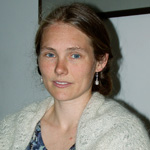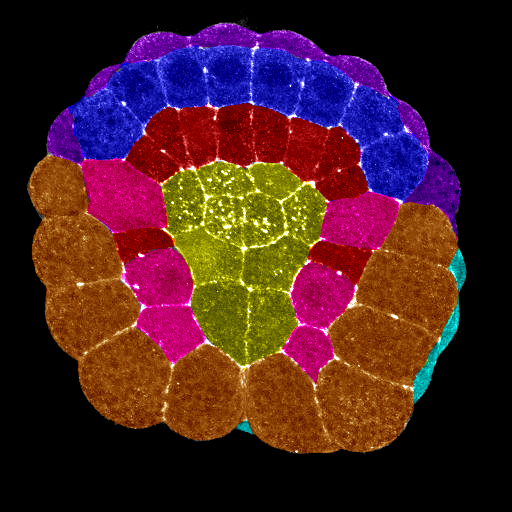
Post-doctoral Fellow
kmsherra@u.washington.edu
I am interested in the cellular and mechanical basis for morphogenesis, a focus towards which I have spiraled inexorably if circuitously. I grew up in the Pacific Northwest and always expected to become a marine biologist, which I envisioned as studying whales and dolphins. I become side-tracked as an undergrad, receiving a B.A. in linguistics at Hampshire College in 1993, then rapidly came to my senses and remembered I wanted to study biology. While working through math and science pre-requisities for graduate school, I took invertebrate biology from Ken Lohman at UNC-Chapel Hill and discovered that small, squishy things that fit under a microscope were as bizarre as creatures from another planet and much more fascinating than whales. I went on to study the remnants of small squishy creatures, doing a master’s thesis in paleobiology with Peter Ward in the University of Washington’s geology department (1996-1998), in pursuit of which I spent much time in the Zoology department and at Friday Harbor Labs (FHL). I became fascinated by biomechanics, and thanks to courses with Tom Daniel and Garry Odell, my trajectory jumped definitively towards a mechanical approach to understanding biological function. I went on to study biomechanics with Mike LaBarbera at the University of Chicago, , where I worked on the fluid mechanics of suspension feeding in newly metamorphosed juvenile ascidians, and received my Ph.D. in 2003. I continued to work summers at FHL, and was there attracted to the Center for Cell Dynamics, where I have been a post-doc since 2005 (and where I can occasionally watch the orcas swim by). Inspired by Ray Keller’s opinion (see Keller et al. 2003) that what developmental biology needed was a biomechanical perspective, I set out to investigate endoderm invagination in ascidians . This entailed just moving my focus to a slightly smaller scale, and a little earlier in ontogeny; however it has also required that I educate myself in a whole new realm of cell and developmental biology. Fortunately, at this tiny center of my inward-spiraling trajectory I have found a realm vast enough to occupy and fascinate me for several lifetimes of study.

Vegetal view of ascidian embryo, 110-cell stage, early in gastrulation. Cell fates have largely been determined by the 32-cells stage: endoderm yellow, muscle orange, mesenchyme pink, notochord red, A-line neural blue, a-line neural purple, ectoderm cyan.